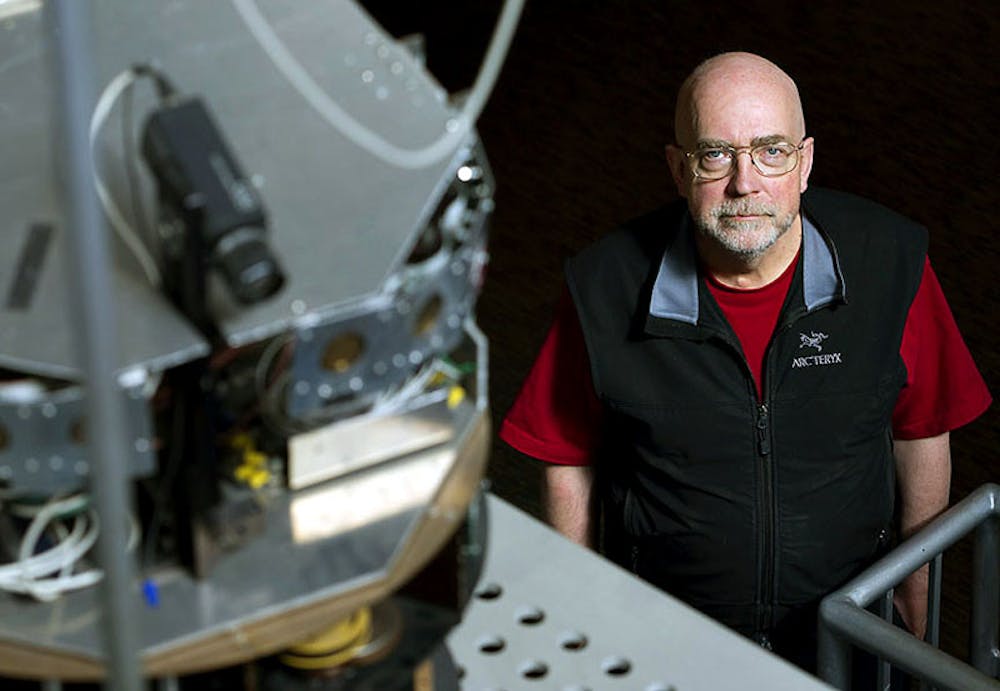Professor of Computer Science Maurice Herlihy was elected to the National Academy of Engineering, a nonprofit organization composed of globally prominent engineers, Feb. 7. He is among 69 new members and 11 foreign associates inducted into the NAE this year, according to a press release from the organization.
The NAE, whose members elect new inductees, supports the engineering profession and advises the federal government on technological and engineering-related policy matters, according to the group’s website.
Herlihy received the distinction for research on computing techniques that he said he has done for at least 15 years. He won commendation for working with collaborators to invent concurrent computing techniques such as linearizability, non-blocking data structures and transactional memory. This research involves coordinating computers’ activities with multi-core processors, or the ‘brains’ of a computer. These devices have several units and are capable of performing different actions simultaneously.
Roberto Tamassia, chair of the computer science department, said Herlihy’s induction into the organization was a significant honor.
“It is a huge distinction, a major recognition,” Tamassia said. “It increases the visibility and the prestige of the department.”
Tamassia said Herlihy is one of about 100 NAE members who are active faculty members in the fields of computer science and computer engineering. The NAE has a total of 2,250 members and 211 ‘foreign associates, ’ or non-U.S. members, according to a press release from the organization.
Herlihy said he was honored by the distinction. “It’s very gratifying to have this kind of recognition, not just for me, but also, I think it’s recognition of the area that I work in,” he said, adding the research has only recently become of interest to the industry.
Before 2004, most computers had single core processors, and tech companies were not interested in research involving multi-core processors, Herlihy said. But when engineers discovered limits to the efficiency of single core processors, they began using the multi-core processors that Herlihy had been studying, leading to his research receiving more attention and prestige.
“Think of a restaurant kitchen,” Herlihy said. “The whole activity has to be coordinated to bring out everybody’s meal on time in perfect shape … in order to get the work done, you need lots and lots of people, and they’re all doing slightly different things, and they all need to coordinate closely so that they don’t get confused.”
Intel, the corporation that produces processors for most personal computers, including Apple and Windows computers, will start using transactional memory to develop its hardware in June, Herlihy said.
Herlihy said he conducted his research with the help of many collaborators and students at Digital Equipment Corporation Cambridge Research Lab, Carnegie Mellon University and Brown.
“The fact that industrial researchers and academic researchers have the funding and the freedom to look at problems because they’re interesting and not because they’re of critical importance today is really helpful because later on they will be of critical importance,” Herlihy said. He added that the University’s researchers owed much of their success to motivated undergraduates who assist them.
Several computer science graduate students and undergraduates aided Herlihy with his research, including Marquita Ellis ’12 GS.
“I really admire (Herlihy) as a teacher, a professor and a researcher, and I feel very privileged to get to work with him,” Ellis said, adding that she started doing research on transactional memory in her senior year.
Two alums were also elected to the NAE this year. The organization elected H. David Hibbitt Ph.D.’72, founder and former chairman of a company now known as Dassault Systemes, as a foreign associate for creating a code that contributes to the development of 3D visualization software for engineers, according to an NAE press release.
Enrique Lavernia ’82, dean of the College of Engineering at the University of California at Davis, said he was elected to the NAE for his leadership in engineering education and for research involving the structural modification of metals and alloys on a nanometric level. These metal modifications help companies create new materials with useful properties, such as stronger metal for planes, Lavernia said.
Lavernia credited the University for awakening his passions for research and education. “The professors at Brown are really remarkable, even still today, in that they’re great researchers but they’re also really good teachers,” Lavernia said. “Brown inspired me to try to do both and to care for my students.”
Michael Ortiz, a former associate professor of engineering who now teaches at the California Institute of Technology, was also elected to the NAE this year for his research contributions to the field of computational mechanics, according to an NAE press release.
There are now a total of 14 alums and 12 current or former Brown faculty members in the NAE, said Gordon Morton, manager of communications for the School of Engineering. New members of the NAE will participate in an induction ceremony in October.

ADVERTISEMENT




